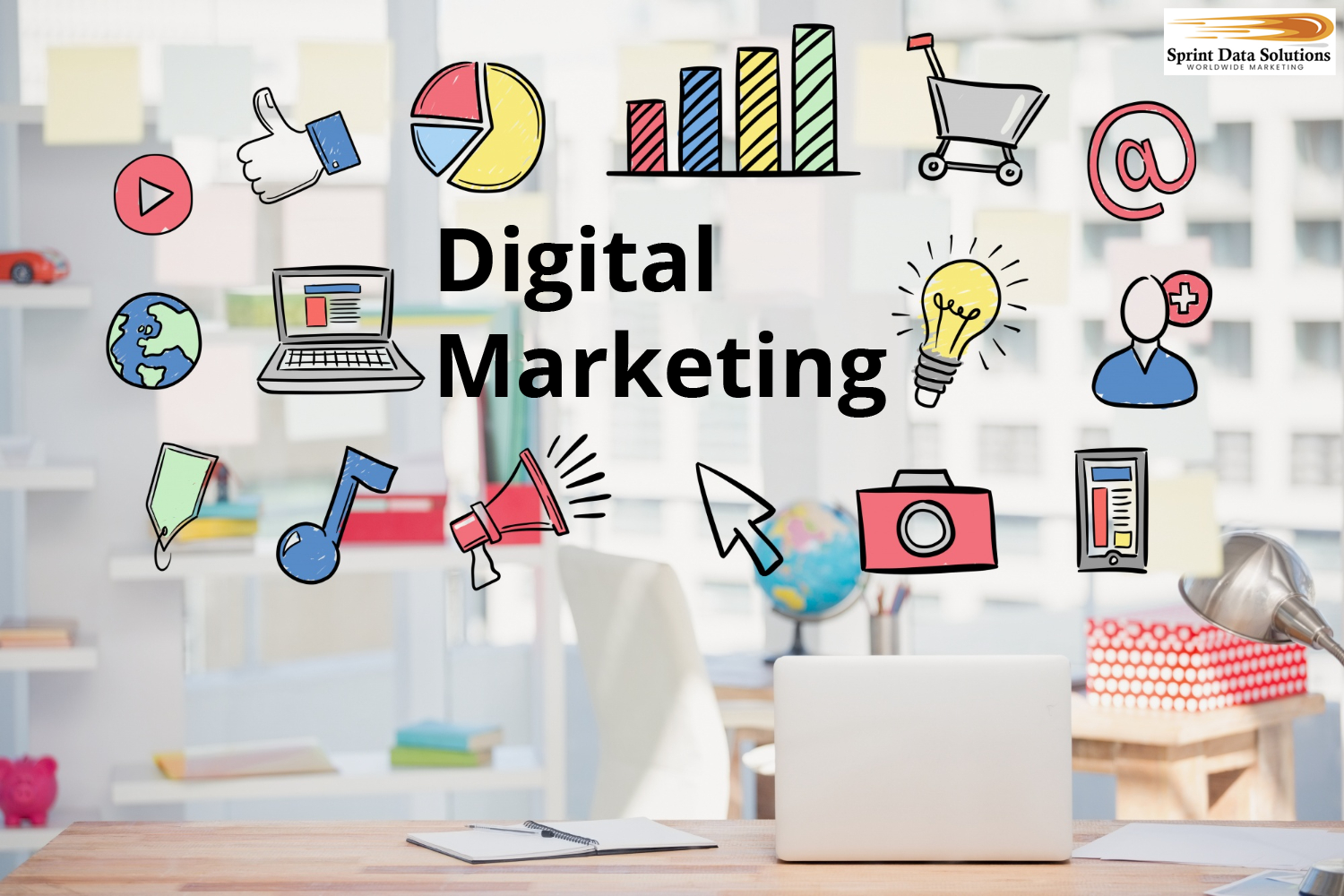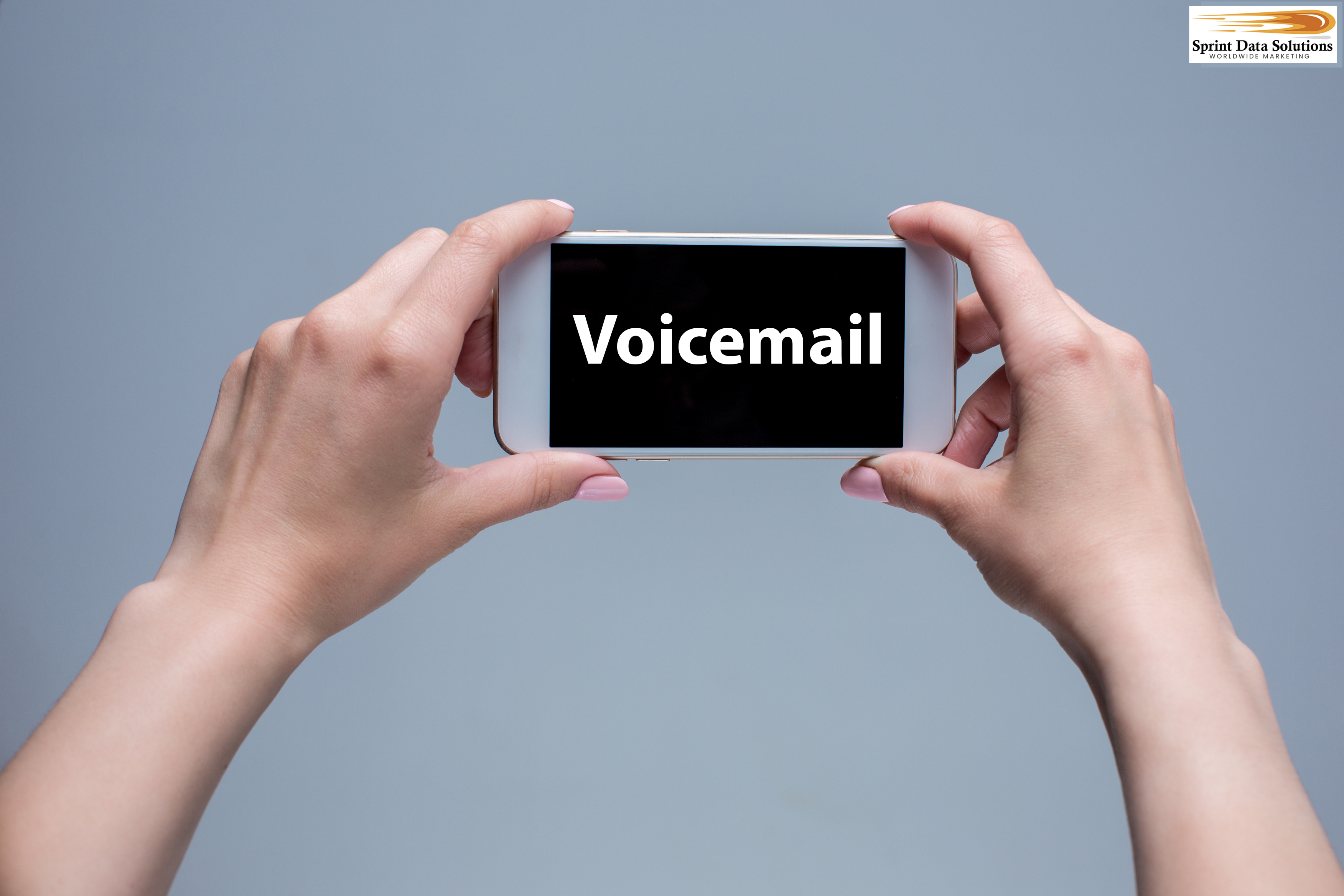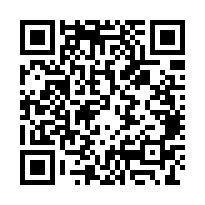Digital Marketing Is The Next Channel For The 21st Century
The evolution of marketing over the centuries has been deeply intertwined with advancements in communication media. In the 19th century, marketing was fundamentally limited to print—newspapers, handbills, posters, and direct mail. With the industrial revolution enabling mass production, businesses needed equally scaled methods to promote their offerings. The printing press was the dominant medium, enabling consistent messaging at a relatively low cost, but still relying heavily on textual persuasion and static imagery to capture attention.
The 20th century brought transformative shifts. The emergence of radio in the early part of the century introduced sound into marketing, allowing brands to speak directly to households in real time. Later, television revolutionized the field further by combining sight, sound, and motion. Now companies could tell immersive stories, showcase their products in action, and establish emotional connections with audiences in ways previously unimaginable. These mass media channels defined the golden era of brand advertising, fostering iconic campaigns and household names.
In the 21st century, we’ve witnessed another leap—not merely in fidelity, but in intelligence and personalization. Digital platforms such as websites, social media, mobile apps, and streaming services have not only unified the best of previous mediums but have introduced unprecedented levels of targeting and interactivity. Marketing is no longer just about reaching large audiences—it’s about reaching the right audiences at the right time with tailored messaging. Technologies like cookies, geofencing, machine learning, and real-time analytics enable marketers to deliver personalized experiences to users based on behaviors, interests, demographics, and more. This shift from mass communication to micro-segmentation has elevated efficiency and ROI for businesses of all sizes.
Sprint Data Solutions Worldwide Marketing understands these dynamics and offers services that help clients leverage modern data tools and platforms to connect with high-interest audiences. By harnessing demographic databases, predictive modeling, and omnichannel strategies, businesses can achieve more with less—focusing efforts on consumers most likely to convert. In today’s crowded and competitive digital landscape, this strategic approach to marketing is not just advantageous—it’s essential.

What Sprint Data Solutions Worldwide Marketing Is
Sprint Data Solutions Worldwide Marketing was founded by a disabled veteran with a vision for innovation and impact. The company launched operations during a transitional era in advertising—just before digital marketing emerged as a viable force. At that time, traditional media such as television, radio, and print still dominated the marketing landscape. Yet industry observers correctly anticipated that digital platforms would eventually revolutionize how businesses connected with consumers, once their full potential was harnessed.
From its inception, Sprint Data Solutions specialized in direct mail marketing—a discipline that demands rigorous data management, audience segmentation, and response analysis. These core competencies positioned the company uniquely when the digital revolution arrived. While many firms struggled to adapt to the evolving digital ecosystem, Sprint Data Solutions already possessed the data-centric infrastructure and analytical insight required to succeed.
Recognizing the shift, the company strategically expanded its services to incorporate digital marketing channels, including email campaigns, online advertising, and search engine optimization. This integration allowed Sprint Data Solutions to capitalize on an early mover advantage in digital spaces. As a result, it delivered superior targeting and performance outcomes for its clients, combining traditional marketing wisdom with cutting-edge digital strategies.
Today, Sprint Data Solutions Worldwide Marketing stands as a leader in data-driven marketing solutions, serving a diverse range of industries and clients across the nation. Its growth is a testament to forward-thinking leadership, technical expertise, and an unwavering commitment to delivering measurable results.
The Digital Marketing Difference
Digital marketing represents a transformative shift in the landscape of promotional strategies, offering capabilities far beyond the reach of traditional media. One of its most revolutionary advantages lies in its ability to provide precise, real-time data on user behavior and campaign performance. Unlike older formats such as television, radio, or print, which primarily operate on generalized audience estimates and indirect impact assessments, digital marketing allows for detailed tracking and analytics at every stage of the customer journey. For instance, while a TV commercial might reach millions, there’s no reliable way to know how many viewers actually watched it, paid attention, or took action as a result. Attribution in traditional media relies heavily on surveys, statistical models, and assumptions.
Digital marketing, on the other hand, is inherently interactive and data-driven. Every click, impression, conversion, and bounce can be recorded, analyzed, and used to refine future strategies. Whether it’s tracking open rates in email campaigns, user interactions on a landing page, or customer paths through an e-commerce funnel, digital platforms empower marketers with concrete, actionable insights. These insights not only improve targeting and personalization but also make it possible to calculate return on investment (ROI) with a high degree of accuracy. This transparency and adaptability are what make digital marketing a superior tool for businesses seeking to maximize the efficiency and effectiveness of their promotional efforts in today’s data-centric world.
One fundamental distinction between direct mail and email marketing lies in the level of trackability and delivery assurance. With email, marketers benefit from near-total transparency—delivery reports confirm whether a message was sent, received, bounced, or marked as spam. Advanced analytics further reveal user engagement, such as open rates, click-throughs, time spent reading, and conversions. In contrast, direct mail lacks this clarity. Once a physical piece is sent, businesses are left in the dark—did it arrive? Was it discarded without being read? This ambiguity makes it difficult to determine whether a lack of response reflects disinterest or failed delivery. Furthermore, email campaigns can integrate tracking URLs and personalized promotional codes, linking every recipient’s behavior to a tangible data point—who clicked, what they bought, when, and from where. This level of insight not only attributes revenue to specific campaigns but also fuels customer profiling and segmentation, empowering marketers to optimize messaging, timing, and offers with unparalleled precision in future outreach efforts.
Multi-Media
Unlike traditional marketing techniques, digital marketing is not constrained by the limitations of specific media formats. Traditional media each come with inherent restrictions—print lacks sound and motion, radio cannot deliver visuals, and even video content doesn’t offer the real-time interactivity of a two-way conversation like telemarketing does. Digital marketing, by contrast, is a highly versatile ecosystem that can incorporate elements of all these mediums and more, often combining them into a seamless user experience.
For instance, email marketing is no longer confined to plain text. Modern email campaigns frequently feature rich HTML designs, high-resolution imagery, animated GIFs, and embedded videos. They can include interactive elements like polls, carousels, or clickable calls to action that drive users directly to landing pages or e-commerce platforms. Many emails also integrate with chat interfaces—either human agents or AI-driven chatbots—to provide instant responses and support.
Beyond email, digital marketing extends across a vast array of platforms and devices. From SMS campaigns and push notifications on smartphones to programmatic advertising on websites, social media engagement, influencer partnerships, and personalized content via AI algorithms, digital marketing leverages the internet’s interconnectivity to reach consumers wherever they are. This omnichannel approach allows businesses to track engagement, analyze behavior, and adjust strategies in real-time—capabilities that are largely unattainable in the traditional marketing landscape. Some of the format possibilities for digital marketing include:
Email Marketing
Email marketing remains one of the most adaptable and cost-effective tools in the modern marketer’s toolkit. Unlike traditional direct mail, which depends on physical delivery and geographic presence, email marketing reaches consumers wherever they are—at home, at work, or on the move. Whether using a desktop computer, a tablet, or a smartphone, recipients can access promotional content instantly, making it an ideal medium for today’s digitally connected lifestyle.
One of the major advantages of email marketing is its flexible design capabilities. Messages can range from simple, text-based formats for quick communication to sophisticated, multimedia-rich layouts that include branded graphics, animations, embedded videos, and interactive elements like clickable surveys or countdown timers. This allows businesses to customize the user experience based on the message’s urgency, campaign goals, and target audience preferences.
Additionally, email marketing provides unparalleled opportunities for tracking user engagement and optimizing performance. Marketers can embed links that direct recipients to personalized landing pages, while simultaneously collecting data on click-through rates, open rates, and conversion behavior. Advanced automation tools enable intelligent campaigns that adapt based on user activity. For instance, if a customer frequently purchases a consumable product, the system can automatically trigger reminder emails when it’s likely time for a refill or inform them of relevant discounts.
Moreover, dynamic content personalization makes it easy to keep audiences engaged. Customers can receive tailored messages highlighting products they’ve shown interest in, recommendations based on past purchases, or even gentle nudges if they’ve abandoned a shopping cart. These automated workflows reduce the need for manual segmentation and ensure timely, relevant communications—enhancing both customer satisfaction and sales conversions.
In short, email marketing combines reach, responsiveness, and real-time analytics in a way that traditional direct mail cannot match. With proper strategy and tools, businesses of all sizes can use email to build lasting customer relationships, drive revenue, and continuously refine their outreach efforts based on measurable results.
Voice Broadcasting
Voice broadcasting, once seen as a relic of traditional marketing through radio spots and telemarketing, has undergone a significant transformation in the digital era. No longer confined to outdated methods, it has evolved into a dynamic tool that merges the emotional impact of voice with the precision of digital targeting. Today, voice broadcasting can be integrated into modern communication channels—embedded in emails as audio snippets, deployed as voicemail drops in SMS campaigns, or distributed as programmatic ads across streaming platforms and social media.
Its real power lies in personalization and reach. Audio messages can convey tone, emotion, and urgency in ways that text cannot, making them ideal for industries such as healthcare, finance, real estate, and political campaigning. With the rise of AI-generated voice and smart assistants, marketers can now automate, segment, and customize voice messages at scale, creating a more engaging and responsive customer journey. If your business thrives on building trust or evoking an emotional response, modern voice broadcasting could be the innovative digital format that bridges the gap between traditional impact and contemporary delivery.
Text/SMS
A relatively recent but rapidly growing tool in the digital marketing toolkit is the Short Messaging Service (SMS)—more commonly known as “text messaging” or simply “texting.” Originally developed during the early days of mobile telecommunications, SMS was designed to send brief textual communications due to the limited storage capacity and processing power of early mobile phones. These messages, restricted to 160 characters, became the precursor to many modern communication formats. Despite its origins in technical constraint, SMS has proven remarkably resilient and adaptable. In today’s mobile-centric landscape, SMS marketing offers a unique advantage: direct, immediate access to consumers. Unlike email, which may sit unopened, or social media, where algorithms filter visibility, text messages are often opened within minutes—if not seconds—of receipt. Its brevity, once a limitation, is now a strength, enabling businesses to deliver concise, impactful messages that are easy to digest and hard to ignore. This immediacy and high open-rate make SMS an exceptionally powerful channel for time-sensitive promotions, reminders, and customer engagement efforts.

How We Can Help
Sprint Data Solutions Worldwide Marketing has built a robust and expansive archive of contact databases through years of dedicated effort and strategic development. These databases encompass a wide spectrum of demographic, geographic, and industry-specific information, making them valuable assets for targeted marketing campaigns. To further broaden the scope and enhance the precision of our outreach capabilities, we have also forged active partnerships with reputable third-party data providers. These alliances allow us to supplement our proprietary data with fresh, high-quality contacts from trusted sources.
All data collection methods adhere strictly to ethical standards and legal requirements. Our contact information is sourced exclusively through consent-based mechanisms, including opt-in subscriptions to newsletters, account registrations that include permissions for marketing use, voluntary participation in surveys, and the intentional provision of contact information such as business cards. These practices ensure that our data is both compliant and respectful of consumer privacy.
Crucially, our databases are not treated as static assets. Instead, they are maintained as dynamic, “living documents” that undergo regular updates and integrity checks. We understand that people relocate, change email addresses, switch jobs, or unfortunately, pass away. Left unchecked, such changes can significantly erode the accuracy and effectiveness of a marketing list. That’s why we prioritize continuous data hygiene—conducting periodic reviews, verification procedures, and real-time updates where applicable. This proactive maintenance ensures our clients receive only current, actionable data, maximizing both the efficiency and ROI of their outreach efforts.
By investing in both data quality and ethical sourcing, Sprint Data Solutions provides clients with the confidence that every campaign starts with accurate, permission-based contact information designed to deliver measurable results.
While a large database may offer breadth, it doesn’t inherently translate into sales success. At Sprint Data Solutions Worldwide Marketing, the focus is on precision, not just volume. The company employs advanced artificial intelligence and machine learning technologies to perform robust data analytics, enabling the extraction of deeply relevant insights from vast datasets. These systems don’t merely sift through records—they actively learn from patterns in consumer behavior, response rates, and market dynamics to refine contact lists continuously.
Rather than delivering arbitrary or generic contacts, Sprint’s AI-driven processes ensure each database is custom-built to match a client’s specific marketing goals. Factors such as purchasing history, demographic characteristics, engagement propensity, and lifestyle indicators are used to tailor lists that reflect the most promising leads. This targeted approach significantly improves the chances of generating interest, fostering engagement, and converting leads into loyal customers.
A key pillar of this customization is geographic segmentation. Whether a client is launching a national-scale marketing campaign or looking to penetrate a tightly focused local market, Sprint Data Solutions offers unparalleled flexibility. Clients can target entire regions—such as the broader New England area—or zoom in with surgical precision on specific states like Massachusetts. For hyperlocal strategies, data can be refined down to individual cities or neighborhoods. For instance, marketers can choose to focus exclusively on residents of Beacon Hill in Boston, ensuring every marketing dollar reaches the most strategically valuable audience.
An increasingly vital component of effective outreach is the strategic application of data analytics to segment and prioritize contacts based on detailed customer attributes. These metrics can be broken down across a variety of dimensions to better align marketing efforts with audience receptivity. For instance, campaigns may be more successful when tailored by ethnic background, such as initiatives that resonate particularly well with African-American communities. Similarly, religious affiliation can guide outreach, with certain services or messages gaining stronger traction among Jewish consumers. Financial segmentation is another critical layer—data can be filtered to focus on high-net-worth individuals or households with specific income brackets, ensuring that luxury or premium offerings reach the right audience. Additionally, health-related indicators—like chronic conditions such as diabetes—can inform campaigns for specialized products, services, or healthcare programs. This level of granularity enables businesses to enhance relevance, improve conversion rates, and ultimately maximize return on marketing investment.
An Array Of Services
Sprint Data Solutions Worldwide Marketing leverages comprehensive databases to deliver a wide spectrum of results-driven digital marketing solutions, including targeted email campaigns, lead generation, demographic profiling, and multichannel outreach strategies tailored to maximize client engagement and ROI.
Email Broadcasts
One of the most fundamental yet consistently powerful forms of digital marketing is the email broadcast. This strategy can be precisely customized to promote specific products or services, announce time-sensitive offers, or build broader brand awareness. When crafted with relevant content and directed at a well-segmented audience, email broadcasts can significantly outperform other channels in terms of engagement. Recipients who have shown prior interest or opted into communication are far more likely to open, read, and respond to these emails. Such permission-based targeting helps avoid spam filters, improves deliverability, and ensures a higher return on investment by reaching people who are genuinely interested in the message.
Email Newsletter Broadcasting
Email newsletters are a powerful and versatile marketing tool, especially valuable when a business aims to provide more comprehensive and meaningful content to its audience. Unlike short-term promotional campaigns or flash sales, newsletters are typically designed to offer in-depth insights, fostering stronger relationships with customers through informative and valuable communication.
While newsletters can effectively promote products and services, their true potential lies in offering supplemental content that educates, inspires, or entertains recipients. For instance, a business specializing in automotive repair and detailing accessories can not only highlight new product arrivals or discounts but also include expert-written guides on advanced polishing techniques, seasonal maintenance tips, or interviews with professionals in the auto detailing industry. This approach not only promotes sales but positions the brand as a trusted authority.
Similarly, wellness brands have a unique opportunity to connect with their audience on a deeper level. Beyond promoting items such as aromatherapy tools, stress relief gadgets, or nutritional supplements, newsletters can feature content such as guided meditation scripts, articles on work-life balance, mental wellness advice, or event announcements for workshops and seminars with health experts. These thoughtful additions help reinforce the business’s commitment to holistic well-being, making each newsletter a source of inspiration rather than just a sales pitch.
SMS Text Messaging Campaigns
With the growing dependence on smartphones throughout the day, many individuals now interact with their mobile devices more frequently than with computers. This constant connectivity makes SMS/text messaging one of the most immediate and effective ways to reach consumers. Unlike physical mail, which may go unopened for days, or emails that often land in cluttered inboxes or get caught by spam filters, text messages are usually read within minutes—often while the consumer is actively engaged with their phone.
However, SMS/text marketing isn’t without its challenges. The concise nature of the format demands carefully crafted copy that is clear, compelling, and action-oriented within a tight character limit. This constraint requires marketers to be more strategic, focusing on brevity without sacrificing impact. The most successful campaigns use persuasive language, strong calls-to-action, and personalized content to capture attention quickly.
Despite these considerations, the advantages are clear: SMS/text messaging bypasses many traditional marketing hurdles. It doesn’t rely on internet connectivity, it avoids email spam filters, and it sidesteps the reluctance many people have toward answering unknown calls. When executed well, SMS marketing offers a direct, personal, and highly responsive channel that can significantly boost engagement and conversion rates—making it an invaluable tool in a modern marketer’s arsenal.
Voice Broadcasting Campaigns
In the evolving landscape of digital marketing, voice broadcasting has emerged as a powerful and cost-effective tool. It enables businesses to deliver pre-recorded voice messages that resemble traditional radio ads or voicemail messages, but with the added precision and reach of modern automation. Like SMS marketing, voice broadcasts are most impactful when they are brief, clear, and compelling—audiences tend to lose interest in long-winded messages, so it’s crucial to convey the core message within the first few seconds.
What sets voice broadcasting apart from traditional telemarketing is its scalability. Telemarketing campaigns typically require a large team of agents to make calls manually, consuming significant time and resources. Voice broadcasting eliminates this bottleneck by automating the entire process. A single message can be recorded once and then delivered to thousands of recipients simultaneously, making it ideal for promotions, alerts, surveys, or appointment reminders.
Moreover, modern voice broadcasting systems allow for advanced targeting and personalization, enabling businesses to tailor messages based on demographics, behavior, or geographic location. This ensures that each recipient receives content that is relevant and timely. Integration with CRM platforms and real-time analytics also allows marketers to monitor campaign performance and refine their strategies on the go, maximizing engagement and return on investment.
Voice broadcasting seamlessly blends the persuasive power and emotional resonance of the human voice with the scalability and precision of digital automation—enabling businesses to deliver personalized, high-impact messages to large audiences quickly and cost-effectively. This makes it an indispensable tool in any modern, results-driven marketing strategy.

Ringless Voice Broadcasting Campaigns
Ringless voice broadcasting campaigns operate similarly to traditional voice broadcasting methods in terms of format and user-friendliness. However, the key distinction lies in how the message is delivered: rather than causing the recipient’s phone to ring, the message is placed directly into their voicemail inbox or answering system. This non-intrusive approach avoids disrupting the recipient while still ensuring the communication is received.
This marketing technique is particularly effective because it retains the personal, human element of a spoken message—often more impactful than a text or email—while also benefiting from the analytics of digital marketing. Marketers can track open rates, responses, and delivery success, allowing them to refine their strategy over time and improve ROI. By blending traditional voice messaging with modern data tracking capabilities, ringless voicemail campaigns offer a compelling solution for reaching audiences efficiently and respectfully.
Email Turnkey Campaigns
One of the premium services available to clients upon request is our fully managed, turnkey email marketing campaign. This offering is ideal for businesses that see the value in email marketing but may hesitate due to limited experience, lack of internal resources, or the complexity of coordinating multiple service providers. Our turnkey solution is designed to simplify the process and deliver results with maximum efficiency.
From the initial concept and campaign strategy, we work closely with clients to identify objectives, define the target audience, and tailor messaging for maximum engagement. Our experienced copywriting team then crafts compelling email content aligned with brand voice and marketing goals, while our graphic design professionals create visually engaging layouts, banners, and calls-to-action that elevate the message and reinforce brand identity.
Once the creative elements are finalized, we handle the technical side, including audience segmentation and contact sourcing. Clients benefit from access to our expansive and verified email database, allowing for precise targeting by demographics, industry, or region. This ensures your message reaches the right inboxes, enhancing engagement and ROI.
We then manage the actual email deployment, including testing, deliverability monitoring, and response tracking. Throughout the campaign, clients receive expert guidance on best practices, performance optimization, and strategic adjustments. We not only execute each step with precision but also educate our clients along the way—offering insight into what drives successful email marketing and why certain strategies outperform others.
By offering a comprehensive solution under one roof, we eliminate the need for businesses to engage separate copywriters, designers, data brokers, or email delivery vendors. This integrated approach reduces friction, lowers costs, and accelerates time-to-market while ensuring a consistent, professional result from start to finish.
Looking to expand your customer base and boost sales through targeted digital marketing? Sprint Data Solutions Worldwide Marketing offers verified, high-quality leads tailored to your industry and audience. Whether you’re launching a new product or promoting services, our data-driven approach connects you directly with potential buyers who are ready to engage. Contact us today to access the marketing solutions that truly drive results.






